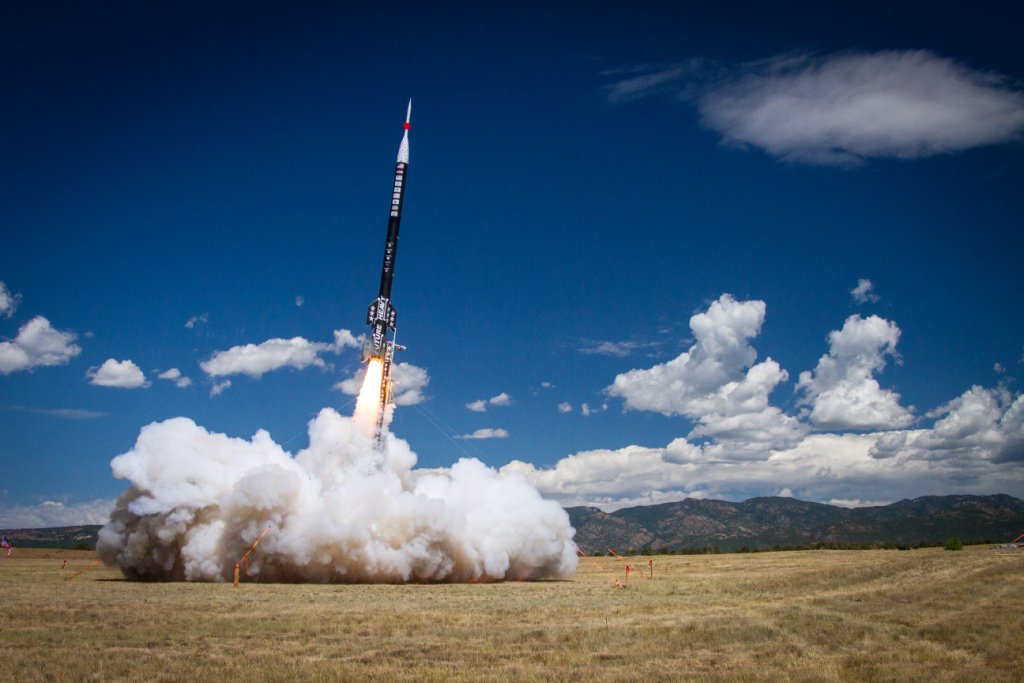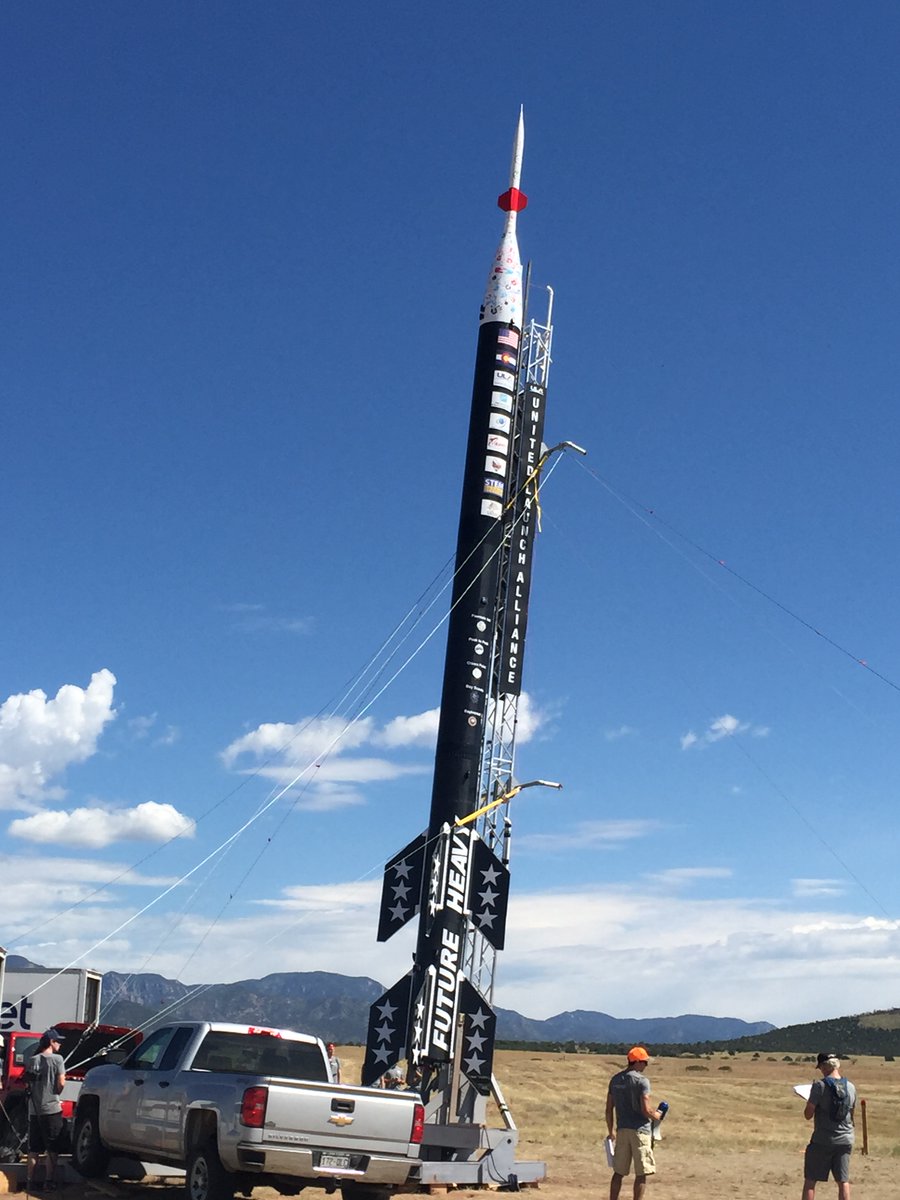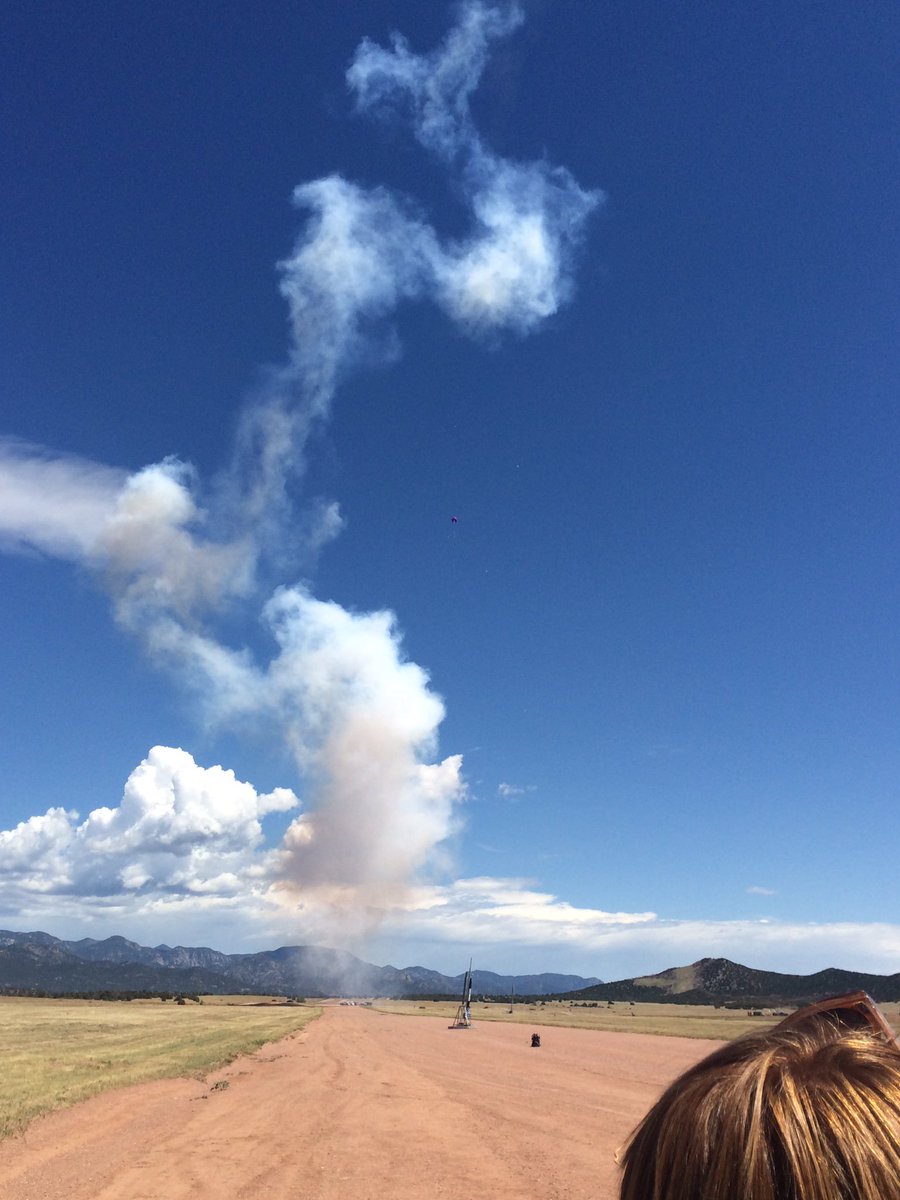Career Launch: 50-Foot Rocket Built By Students Breaks Records

Interns working for the private spaceflight company United Launch Alliance clearly aren't making copies and fetching coffee — they're building record-breaking rockets.
On Sunday (July 24), ULA launched the 50-foot-tall (15.24 meters) Future Heavy rocket out of Fort Carson Army Post, breaking the record for "the largest sport rocket launched anywhere in the world," according to a statement from ULA. The Future Heavy is also notable because it was built entirely by company interns and their mentors.
"We like [our interns] to have a very realistic experience," ULA President and CEO Tory Bruno told Space.com at the Space Symposium meeting in Colorado Springs, Colorado, last April. [Amazing Small Rocket Launches by NASA (Photos)]
Future Heavy intern rocket launch! #missionsuccess #ULA #worldslargestsportrocket #50ft #interns pic.twitter.com/dCgMWeRZAo
ULA launched two intern-built rockets on Sunday: the Future Heavy and the 10-foot-tall (3 m) Genesis rocket. The Future Heavy was set to launch at approximately 11 a.m. MDT (1 p.m. EDT), and the first post-launch images appeared on ULA's Twitter account at 1:27 p.m. EDT (1727 GMT). Twitter user Andrea Lehnhoff (@AndieMarieC) tweeted a video of the launch. The Genesis launch was briefly delayed due to a "tech issue," but ULA later reported mission success. (The day's events also included launches sponsored by the Space Foundation, the statement said).
The Future Heavy, which is defined as a sport rocket (built for recreation, rather than professional purposes), carried four large payloads designed by interns at Ball Aerospace, according to the statement; it also carried 15 small scientific payloads designed by students from nearby K-12 schools and community groups. The rocket's apogee is about 10,000 feet (about 3,000 m) above the ground, members of the internship program told Space.com at the Space Symposium meeting.
For the past five years, interns were given the option to work on the Future Heavy rocket as a side project (outside of normal working hours). Approximately 300 people "had a hand in" building the rocket, according to ULA, while 68 interns and 22 mentors from ULA as well as 37 interns and 19 mentors from Ball Aerospace participated this year. Interns at multiple ULA facilities were able to contribute to the project, Bruno told Space.com.
United Launch Alliance is a joint venture of the aerospace companies Boeing and Lockheed Martin. ULA has completed over 100 consecutive successful launches since its formation in 2006. The company produces the Atlas V and Delta IV rockets, among others.
Breaking space news, the latest updates on rocket launches, skywatching events and more!
Bruno expanded the internship program at ULA when he joined the company, he told Space.com, and the program is set to grow even larger in the near future.
"Internships are a great way to catch a student when they're still being educated and say, 'You know, all this hard work in engineering and science is worthwhile because this is what the industry is going to be like, what your life could be like when you come out,'" he said.
Follow Calla Cofield @callacofield. Follow us @Spacedotcom, Facebook and Google+. Original article on Space.com .

Calla Cofield joined Space.com's crew in October 2014. She enjoys writing about black holes, exploding stars, ripples in space-time, science in comic books, and all the mysteries of the cosmos. Prior to joining Space.com Calla worked as a freelance writer, with her work appearing in APS News, Symmetry magazine, Scientific American, Nature News, Physics World, and others. From 2010 to 2014 she was a producer for The Physics Central Podcast. Previously, Calla worked at the American Museum of Natural History in New York City (hands down the best office building ever) and SLAC National Accelerator Laboratory in California. Calla studied physics at the University of Massachusetts, Amherst and is originally from Sandy, Utah. In 2018, Calla left Space.com to join NASA's Jet Propulsion Laboratory media team where she oversees astronomy, physics, exoplanets and the Cold Atom Lab mission. She has been underground at three of the largest particle accelerators in the world and would really like to know what the heck dark matter is. Contact Calla via: E-Mail – Twitter


